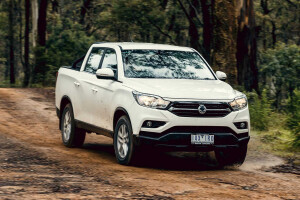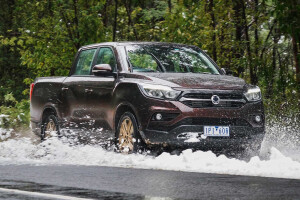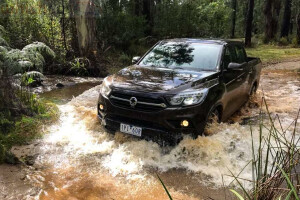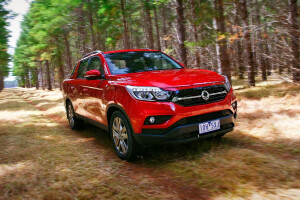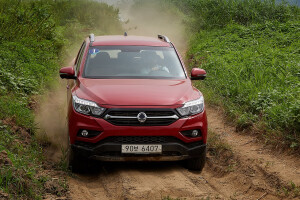Latest Review

2020 SsangYong Musso review
The SsangYong Musso comes in standard and long-wheelbase guises, the latter boasting one of the biggest trays in class.
What stands out?
One of the more underrated models in the 4x4 ute segment, the SsangYong Musso comes in standard and long-wheelbase guises, the latter boasting one of the biggest trays in class. It’s covered by a seven-year warranty, feels quieter and more refined than most of its rivals and is generously equipped.
The Musso XLV Ultimate Plus was a finalist in the 2020 4x4 of the Year and finished a credible fifth.
What might bug me?
Not really knowing where you stand with safety in a Musso. It has yet to be ANCAP tested.
When carrying three passengers in the back, worrying that one may be less safe than the others. The middle seat only has a lap seatbelt instead of the usual three-point restraint.
If you have the most affordable Musso, the EX, missing out on the 8.0-inch touchscreen, smartphone pairing and a reversing camera.
What body styles are there?
There are two versions; the standard-length Musso with the long-wheelbase Musso XLV which has a longer tray.
All are four-wheel drive with dual-range gearing. The 4WD system is part-time, which means you must select rear-wheel drive for sealed roads but may switch to 4WD on loose surfaces.
The Musso is classed as a commercial light pick-up.
What features do all Musso versions have?
- Active safety including autonomous emergency braking (AEB), forward collision warning and lane departure warning.
- Front vehicle start alert, that prompts you when the car in front moves off from the lights should you be distracted.
- Daytime running lights.
- Front and rear fog-lights.
- AM-FM radio, Bluetooth audio and six-speaker audio system – all but the entry-level Musso EX has a full infotainment system which includes an 8.0-inch touchscreen with Apple CarPlay/Android Auto smartphone pairing.
- USB socket to charge or play music from your device.
- Cruise control.
- Power folding and heated door mirrors.
- Buttons on the steering wheel to operate the cruise control and multimedia features.
- Air-conditioning.
- Full-size spare wheel.
- 4WD gearing and limited-slip differential with lock function.
- Six airbags. (For the placement of airbags, and more on SsangYong Musso safety features, please open the Safety section below.)
- Every SsangYong Musso comes with a seven-year warranty, with no restriction on distance.
Which engine uses least fuel, and why wouldn't I choose it?
Every SsangYong Musso comes with the same engine, a 2.2-litre four-cylinder turbodiesel.
On the official test, the standard length (SWB) Misso consumes about 7.6 litres/100km (city and country cycles combined) with the six-speed manual transmission that is available in the entry-level Musso EX. With the six-speed automatic gearbox, the Musso consumes 8.6 litres/100km.
The heavier Misso XLV versions consume 8.2L/100km through the manual transmission and 8.9 litres/100km with the auto.
The 2.2-litre engine isn’t the most powerful you’ll find in a dual-cab ute, but it has 400Nm of torque to easily move it off the line.
All Mussos have a part-time four-wheel-drive system that you can switch from 2WD to 4WD when moving from road to dirt. There is also high and low 4WD gear ranges.
What key features do I get if I spend more?
The least costly Musso EX is purely a workhorse and misses out on many of the features found in all other versions. It has 17-inch steel wheels, no touchscreen or revering camera, coil suspension, and comes standard with the six-speed gearbox. The six-speed automatic gearbox is available for an additional $2000.
Stepping up to the Musso ELX brings a host of additional features that you’ll find in an SUV, including:
- 8.0-inch touchscreen infotainment.
- Apple CarPlay/Android Auto smartphone pairing.
- Reversing camera.
- Front and rear parking sensors.
- Additional active safety including blind-spot detection, lane-change assist, rear-cross traffic alert.
- 18-inch alloy wheels.
- Tyre pressure monitoring
- Six-speed automatic transmission as standard.
The Musso XLV ELX brings the longer wheelbase and 310mm longer tray but smaller 17-inch alloy wheels. It also comes standard with the manual gearbox and leaf-spring suspension, with the auto available as an extra-cost option.
Paying more again for the Musso Ultimate brings additional creature comforts, such as:
- Leather seats.
- Power-operated and heated and ventilated front seats.
- Reach adjustable steering wheel.
- Heated leather steering wheel.
- 360-degree parking monitor.
- Speed-sensitive steering.
- HID headlights with auto on/off function.
- 20-inch alloy wheels.
While you gain the more voluminous tray, the Musso XLV Ultimate is lesser equipped than the shorter version, with projector headlights, durable fabric seats, and manually adjusted front seats. It also misses out the heated steering wheel and 360-degree parking camera.
It comes standard with coil suspension and 18-inch wheels, but you can opt for more durable leaf-spring suspension for increased payload and 17-inch wheels for no extra cost.
The Musso XLV Ulimate Plus is the most expensive Musso you can get and has all the features of the standard Musso Ultimate plus a sunroof.
Does any upgrade have a down side?
Stepping up from the manual to the automatic transmission sees a slight jump in fuel consumption.
Paying a little more for the longer Musso XLV ELX or Ultimate brings fewer features than in the standard length equivalents.
The pricer Musso XLV versions consume a bit more fuel.
The bigger 20-inch wheels in the Musso Ultimate and Musso XLV Ultimate Plus ride harder on roads while the bigger wheels are less practical off-road. The bigger tyres are also more expensive to replace.
How comfortable is it?
Even the tradie-spec Musso EX, while missing out on a reversing camera and Apple CarPlay and Android Auto, is spacious and comfortable and has one of the best laid-out and quietest cabins in the one-tonne 4x4 ute segment.
In all versions, the interior impresses with a grey and black palette matched to a mix of hard- and soft-touch surfaces. In all but the EX, the range-wide eight-inch multimedia screen sits front and centre and is easily accessed by the driver or passenger and is intuitive in use.
All switches (indicators, lights, windows, mirror-adjust and 4WD settings) are easy to reach and operate. Fit and finish is surprisingly good, with tight gaps on panels and a reassuring thud when the doors close.
The seats across the various trim levels are firm but supportive and comfortable. Rear seating is also comfortable for adults, with sufficient legroom for a 180cm-tall tall people to sit comfortably.
What about safety in a Musso?
Every Musso features autonomous emergency braking (AEB), forward collision warning and lane departure warning. All versions above the entry-level EX also have blind-spot detection, rear-cross traffic alert, and blind-spot monitoring that SsangYong calls lane-change assist,
The Musso comes with four-wheel disc brakes, where plenty of rival 4WD utes still have drum brakes at the rear.
There are two ISOFIX child seat anchor points and three top tether attachments for baby seats in the second row, and six airbags, including rear seat curtains that aren't available in some pricier rivals such as the Volkswagen Amarok.
A couple of safety concerns include the middle seat in the second row only having a lap belt with no sash across the body. Then there’s the fact the Musso yet be tested under the Australasian New Car Assessment Program (ANCAP), which makes it difficult to make an informed decision on its overall safety.
I like driving - will I enjoy this car?
The Musso is one of the few one-tonne dual-cabs rear coil-spring suspension set up, which is supposed to have notable comfort benefits. However, like the Nissan Navara and Mercedes-Benz X-Class, our testers struggled to feel a significant advantage. That said, the suspension is well weighted and quite refined considering it’s a ladder-framed ute. With an empty tray, it can be a bit jittery on uneven surfaces, but you get that in any unladen ute and it does smooth out with a load.
The 133kW diesel engine isn’t particularly powerful compared with anything else in the market, but it’s more than adequate even in the heavier XLV versions.
With a decent 400Nm and 420Nm torque output in the SWB and LWB versions respectively, the Musso has decent acceleration and towing ability but its torque band is relatively narrow, meaning the grunt falls off quickly if the engine revs out of the sweet spot
Steering feel is light and a little numb. This is overcome speed-sensitive technology that stiffens the tiller at higher speeds, however, this is only available in the higher-end Ultimate and Ultimate Plus variants.
A three-hour stint at the wheel was completely comfortable thanks to the commercial vehicle driving position, decent cabin insulation and surprisingly good noise, vibration and harshness (NVH) levels.
Off road
A common criticism of the Musso is the factory ground clearance, which is quoted as 216mm for the standard wheelbase, or 220mm for the longer XLV versions where it is more noticeable due to the wider ramp-over angle and longer rear overhang.
The Musso uses a traditional part-time, dual-range 4x4 system with electronic traction control and an auto-locking rear differential. This diff tightens up once slip is detected and is not driver selectable like many lockers.
The suspension works well over rough roads and rutted tracks, although travel is limited and the Musso soon lifts wheels. This is where that auto locker comes into force; you feel the initial wheelspin and then feel it lock up and drive you onward. It is surprising where this will get the Musso, and the vehicle makes a great general touring 4x4.
How is life in the rear seats?
The short- and long-wheelbase versions have the same cabin space, which is one of the roomiest when it comes to rear-seat comfort. Three adults can be seated across the bench in relative comfort.
There are air vents in the back as well usual conveniences such as door bins with bottle holders, cup-holders in the fold-down armrest and map pockets on the front seat-backs.
One big tick against the Musso's second row is the middle seat, which is only a lap belt and not a three-point harness. SsangYong claims that a fix is coming but is yet to confirm when.
How is it for carrying stuff?
Excellent, it’s a ute after all.
The 1300mm tray of the SWB Musso appears stubby when you look at it, especially if you’ve spent time with the XLV which has an extra 310mm in tub length. Part of the reason for that is the depth of the tub, which is actually quite massive and has plenty of room.
The rear tray has four low-set sturdy tie-down points, as well as a 12V outlet.
With the coil springs, the SWB versions have a 790kg payload.
The LWB XLV versions' 1610mm tray provides an 800kg payload, though the Musso XLV ELX with leaf-springs can carry up to 1025kg, more than any other one-tonne dual-cab ute - the leaf-spring set-up is a no-cost option with the XLV Ultimate.
All Musso versions have a 3500kg braked towing capacity and can tow unbraked loads up to 750kg.
Where is it made?
The SsangYong Musso is manufactured in South Korea.
What might I miss that similar cars have?
While it’s more affordable than many of its rivals the Musso is more than just a budget ute. It drives and performs better than some of the more popular, pricier vehicles in the one-tonne ute market. It has a growing range of quality factory accessories and a class-leading seven-year warranty.
But there are few things you don't get in a Musso that some of its rivals offer, such as a bigger engine, as available in the Ford Ranger and Volkswagen Amarok, which also offer more performance.
Some utes have more ratios in their auto gearboxes than the Musso’s six, which means their engines spend more time where they run most sweetly. For example, the Nissan Navara has a seven-speed auto the Amarok an eight-speed auto, and the Ford Ranger is available with a 10-speed transmission.
The new Mazda BT-50 has active cruise control as standard, while the Ranger offers it on the more expensive versions. It will match the slower speed of a car in front of you on the highway until you are ready to overtake. This helps reduce fatigue on long journeys.
Other utes you might consider include the Toyota HiLux and Isuzu D-Max.
I like this car, but I can't choose which version. Can you help?
The Musso range is relatively small compared to some of its rivals, but it covers a range of missions from affordable workhorse to family-friendly 4WD tourer.
Unless you require the longer tray, we quite like the short-wheelbase Musso Ultimate that for just under $40,000, offers SUV-styling, comfort and features that make it excellent for work and play.
Are there plans to update this model soon?
The SsangYong Musso has been around since 2018 with the long-wheelbase XLV version joining the range in late 2019. Don’t expect a significant upgrade before 2022, though SsangYong might tweak spec-levels before then.
SsangYong has said it will replace the lap seatbelt in the middle rear seat with a three-point harness but is yet to confirm when this will be.
Score breakdown
Things we like
- Standard equipment
- Unrivalled ute warranty
- Sharp pricing
Not so much
- Middle rear-seat lap seatbelt
- Not ANCAP tested
- Fidgety on-road handling when empty
News
-
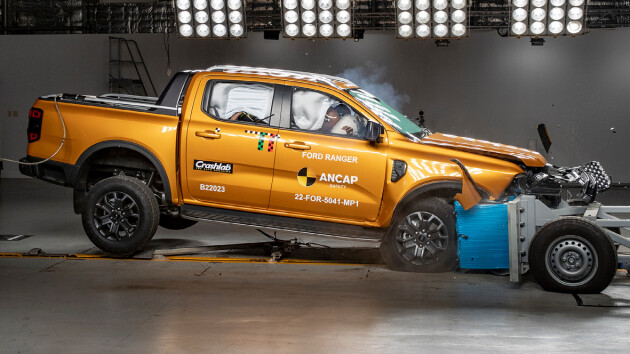 Advice
AdviceDual-cab ute safety features explained
How do Australia's most popular utes compare when it comes to safety? We put it to the test
-
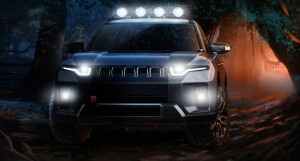 News
News2023 Ssangyong Torres off-roading SUV teased
The electric mid-size SUV is aimed at the more adventurous end of the market
-
 News
News2022 SsangYong Musso pricing and features
The value ute from South Korea has been updated for the new year, with the main change being a much larger digital instrument cluster
-
 News
News2022 SsangYong Musso due in March with tech and styling updates
SsangYong’s dual-cab ute is getting an update, but some things will remain the same
-

2023 SsangYong Musso: SUV said to reclaim badge
-
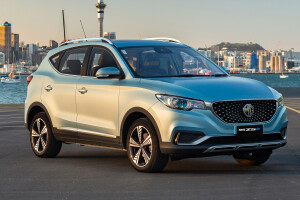
Australia's fastest-selling cars revealed
-
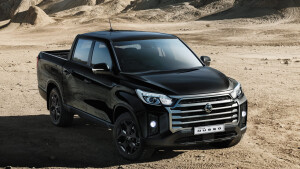
Updated Ssangyong Musso pricing and features
-

Which 4x4 dual-cab offers the most bang for your buck?


